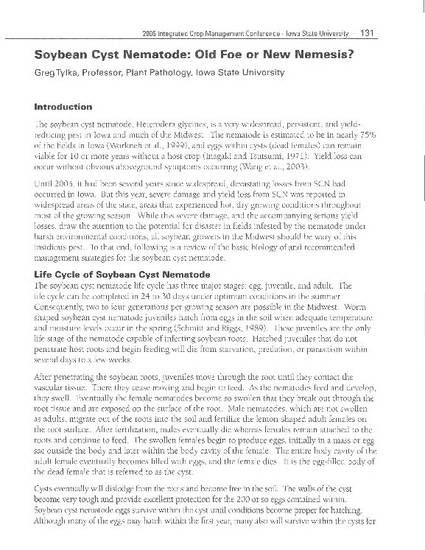
The soybean cyst nematode, Heterodera glycines, is a very widespread, persistent, and yieldreducing pest in Iowa and much of the Midwest. The nematode is estimated to be in nearly 75% of the fields in Iowa (Workneh et al., I999), and eggs within cysts (dead females) can remain viable for 10 or more years without a host crop (Inagaki and Tsutsumi, 1971). Yield loss can occur without obvious aboveground symptoms occurring (Wang et al., 2003). Until 2005, it had been several years since widespread, devastating losses from SCN had occurred in Iowa. But this year, severe damage and yield loss from SCN was reported in widespread areas of the state, areas that experienced hot, dry growing conditions throughout most of the growing season. While this severe damage, and the accompanying serious yield losses, draw the attention to the potential for disaster in fields infested by the nematode under harsh environmental conditions, all soybean growers in the Midwest should be wary of this insidious pest. To that end, following is a review of the basic biology of and recommended management strategies for the soybean cyst nematode
Available at: http://works.bepress.com/gregory-tylka/261/
